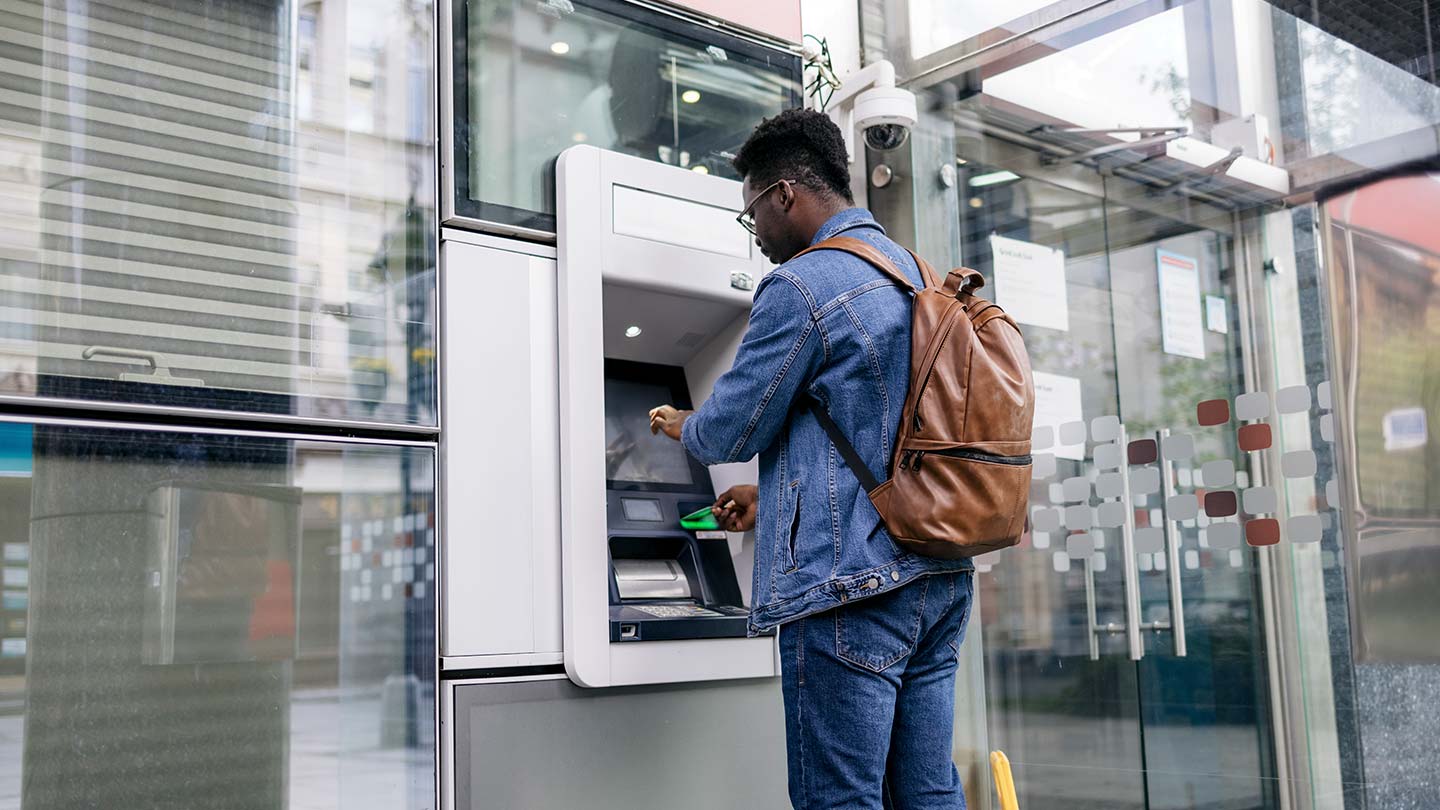LESSONS LEARNED
Key Lesson #1: Technology Paired with Human-Centered Design Drives Scalable Outcomes
While technology isn’t a panacea, approaches that are human-centered—designed with the needs of people in mind—have the power to scale financial health solutions and reach underserved populations. JPMorganChase has supported the mission-driven financial technology sector (fintechs) and nonprofit innovators in developing tools that meet people where they are, helping them budget, save, build credit, and create wealth with greater ease and dignity.
We have seen technology scale innovative financial health solutions, through initiatives like the Financial Solutions Lab (FSL), an early stage accelerator for mission-driven fintechs in collaboration with the Financial Health Network—a leading nonprofit uniting cross-sector organization to design solutions that equitably advance financial health for all people. The FSL startups have collectively supported over 30 million individuals, helping them build $3 billion in savings, avoid $420 million in fees, and settle $200 million in debt.
“Financial health is not merely a responsibility; it is an opportunity to transform lives, strengthen communities, and propel industries. In our decades-long partnership with JPMorganChase, they have consistently demonstrated what’s possible when business strategy is aligned with philanthropic purpose. Their commitment to both intention and impact has driven meaningful investments, data, and insights that continue to fuel innovation across the sector. We’re excited to continue working together to shape the industry’s role in advancing financial health for all in America.” – Jennifer Tescher, Founder and CEO of The Financial Health Network
With Code for America, we have seen another model for how technology is helping modernize public benefits systems to create efficiencies and expand access. With our initial support, Code for America digitized the tax filing process, reaching over 4 million households and distributing $415 million in benefits to low-income families. The model also informed IRS Direct File, the first-ever free public digital tax filing tool. Thoughtful, user-centered design not only improves short-term financial stability, but drives systemic impact.
Based on these learnings, we provided $3 million in additional support to Code for America to launch a new AI Studio, which is taking a holistic approach to designing and deploying technology-enabled solutions in partnership with state agencies. The goal is to increase access to public benefits and help unlock $80 billion in unclaimed benefits each year.
At the same time, we recognize that digital tools must be paired with “high-touch” interventions—like financial coaching—especially for communities navigating multiple systemic challenges. That’s why JPMorganChase has long supported innovations in financial coaching as a complement to tech-based strategies. For example, we supported a pilot for the MoneySmart Financial Coaching Program which integrates financial coaching into community colleges. With notable early success, we are scaling the program and integrating Chase Community Managers as guest lecturers—reinforcing classroom instruction with real-world financial guidance.
Key Lesson #2: Public + Private Systems Must Work in Tandem to Support Financial Health
For many, both public and workplace benefits are vital to managing daily expenses, covering unexpected needs, and planning for the future. But these systems are often disconnected, forcing individuals to navigate fragmented processes that don’t reflect the full complexity of their financial lives. Time and again, we’ve learned that working across public and private sectors is critical to bridging these gaps and creating a more cohesive support network.
To do this, we supported The Aspen Institute’s Financial Security Program (Aspen FSP) Benefits Transformation Initiative, which brings together leaders from government, nonprofit, and private sectors to build integrated systems that close benefit gaps and modernize access across employers and state agencies. Our initial support aimed to align cross-sector partners on challenges and solutions to realize a more integrated and interoperable benefits system across the public and private sector. Moving forward, we are continuing to support this work to uncover structural solutions and generate policy recommendations that tackle barriers to economic mobility that hinder families from building savings and accumulating assets—central components of financial security.
JPMorganChase recently announced $14.5 million philanthropic commitment to advancing workplace and public benefits for LMI individuals. These initiatives will help increase access to critical benefits such as education savings or retirement plans, enabling more people to manage immediate financial needs, as well as save and build wealth.
Key Lesson #3: Listening to Individuals’ Needs Unlocks Smarter Innovation
Credit and savings are foundational to resilience and wealth building. Yet, for many LMI individuals these tools remain difficult to access and sustain due to real-world barriers like unpredictable income, urgent and unexpected expenses, and administrative complexities.
Our work has shown that listening to individuals and their experience, paired with integrating behavioral design, is key to developing smarter, more accessible products and services designed around the realities of their daily lives.
With these insights in mind, we announced $7 million in philanthropic support to ideas42—a behavioral design nonprofit—to launch the Credit: Expanding Opportunity (C:EO) initiative, bringing nonprofit and mission-driven fintech organizations together across the financial services industry to design and test solutions that improve and protect credit for 2 million individuals. Early insights from the first cohort have shown that fee transparency helps build trust and sustain engagement with individuals, contrary to providers’ concerns, and even simple solutions like text reminders can dramatically improve repayment rates.
Research conducted by SaverLife—a nonprofit fintech serving more than 700,000 low-income users with a digital saving platform—uncovered how everyday stressors, like commuting, caregiving, and rising utility bills, impact financial decisions. By deeply engaging their network of users, they curated the platform to customer needs. For example, they launched a mobile app after recognizing that 90 percent of their users accessed SaverLife via mobile phones, offering personalized savings challenges and incentives to help people reach a savings goal. With these innovations, SaverLife has supported 315,000 members to save an average of $2,500—tripling their savings rate.
We are now working with Saverlife to deepen this impact through a new $3.5 million grant supporting their integration of AI and advanced data analytics to create tailored experiences for LMI individuals that encompasses the totality of an individual’s financial life. Underpinned by behavioral science, these enhancements will provide even more personalized financial health navigation, helping individuals make informed decisions at the right time to improve their financial health.
"Too often, solutions aimed at low- and moderate-income communities don’t reflect the reality of people’s lives—the irregular income, the caregiving responsibilities, the cognitive burden of navigating multiple systems just to make ends meet. JPMorganChase’s support for SaverLife signals something different: a belief that innovation must embrace complexity rather than ignore it. Their support gave us the ability to design tech-driven tools rooted in empathy and reality. They understand that improving financial outcomes for LMI households requires both bold innovation and a deep respect for the contexts in which people live and make decisions." – Leigh Phillips, President and CEO of SaverLife
On the flipside of the coin, we also know that financial services companies need to remain vigilant in mitigating bias in AI models. JPMorganChase’s Impact Finance & Advisory team invested in FairPlay, a mission-driven fintech helping financial service providers and fintechs evaluate AI-trained underwriting models, as part of their recent $10 million round. FairPlay supports institutions of all sizes in evaluating their models for potential bias, expanding access to responsible credit, and strengthening the broader financial ecosystem through more equitable AI practices.
Key Lesson #4: Financial Health Doesn’t Exist in a Silo—We Must Support Individuals at Every Stage
Wealth building is deeply intertwined with everyday financial realities—employment, housing, entrepreneurship, and systemic risks. Effective financial health strategies must not only acknowledge, but center these complex realities and offer support throughout an individual’s journey—from utilizing benefits and establishing credit, to launching businesses or saving for education.
We know many individuals could significantly improve their financial wellbeing through employer programs. These workplace benefits help provide a vital safety net for workers to navigate their day-to-day challenges and plan for long-term goals like college and retirement. Yet fewer than one-third of workers have access to workplace benefits that could help them manage critical financial needs8 , costing the economy nearly $183 billion per year.9
With a $7 million philanthropic commitment from JPMorganChase, Commonwealth launched “Benefits for the Future”—a national initiative partnering with large employers and benefits providers to pilot and scale workplace benefits programs that improve the financial health of 2.5 million individuals. Benefits for the Future is also going deep in Columbus and Chicago, where they are bringing regional employers to the table to evaluate and develop localized programs.
“JPMorganChase has been a long-standing national leader in financial health and a fantastic partner to Commonwealth. We especially value the creativity and full range of assets JPMorganChase brings to this vital work, beginning with strategic philanthropy but extending to testing new approaches in their business lines, conducting essential research through their Institute, and contributing to critical policy conversations through their PolicyCenter. JPMorganChase also leads by example with their internal Human Resource practices, and uses their respected voice to convene diverse partners and place essential family financial security issues on the agenda nationally and in community. Commonwealth’s work on AI for financial health, inclusive wealth building, and making the workplace an engine of financial security and opportunity would not have been possible without JPMorganChase’s close partnership.” – Timothy Flacke, Co-Founder and CEO of Commonwealth
Homeownership is another proven source of wealth building; however, underserved communities face persistent challenges in obtaining and maintaining their homes. We have learned through our housing affordability initiatives that supporting an individual throughout the entire homeownership journey—from pre-purchase education and affordability support to post-purchase stability—ensures first-time and LMI homeowners have increased access to homeownership and retain equity over time. That’s why we partnered with organizations like Homewise to pilot a new credit builder loan product with matched savings as a model for overcoming key barriers to homeownership.
Entrepreneurship can be another path to wealth, but is often intertwined with personal finances. That’s why we’re supporting the Financial Access Initiative at the NYU Wagner Graduate School of Public Service to launch Small Firm Diaries, a two-year study to understand how entrepreneurs in low-income neighborhoods across the Greater Washington DC Region, Chicago, Atlanta, Oakland, New York City, and St. Louis manage their financial lives—identifying insights to design better support systems for small businesses.
Key Lesson #5: Cross-Sector Collaboration Drives Systemic Change
To build, protect and grow wealth, we must collaborate across the financial ecosystem—designing accessible tools, building new infrastructure, and tackling systemic risks like fraud and scams.
Our support of Aspen FSP and its’ call for a National Financial Inclusion Strategy & Commission reflects our commitment to fostering alignment between financial services, government, and nonprofit leaders on a framework to drive towards a financial system for all. Building on this initial work, Aspen FSP continued to convene the Working Group on Inclusive Finance, including JPMorganChase, to unite and implement a holistic framework—from financial stability, to financial resilience, and ultimately, wealth—to track and accelerate progress on financial inclusion.
“We know that the ability of households to access, use, and benefit from essential financial services is critical to individual prosperity and the broader health of our economy. Our programs actively pursue strategies that expand economic opportunity, strengthen financial resilience, and protect the wealth families build. In partnership with JPMorgan Chase, we are able to advance these efforts and deliver practical solutions that can improve financial well-being for all Americans.” – Dan Porterfield, President & CEO, Aspen Institute
A key topic as part of the broader financial inclusion framework is the growing threat of fraud and scams to Americans’ public safety and financial health, with implications for the economy, U.S. financial system, and national security. Individuals—particularly vulnerable populations such as those living on LMI and the elderly—are increasingly targeted by sophisticated scams. Institutions across sectors—finance, telecommunications, technology and social media, law enforcement, public sector, consumer advocacy groups—are navigating the rapidly evolving fraud and scam ecosystem and are facing an environment of eroding consumer confidence. That’s why JPMorganChase is proud to be a founding member of the Aspen Institute’s National Task Force on Fraud & Scam Prevention, working with leaders across the private, public, and nonprofit sectors to develop a nation-wide strategy aimed at helping prevent fraud and scams and protect Americans. We’re also a founding member of the Global Anti-Scam Alliance North America Chapter—allowing for cross-sector and cross-border information sharing on best practices to tackle fraud and scams.
New Strategy for Strengthening Pathways to Financial Health
Building on these five overarching lessons, JPMorganChase Corporate Responsibility is doubling down on our suite of tools to innovate and scale solutions that improve the financial health of individuals, particularly those living on LMI. Informed by past philanthropic and impact investing capital commitments, partnerships, and business insights, the new strategy will focus on three categories:
- Building financial stability;
- Supporting financial resilience; and
- Creating and protecting wealth.
We view this strategy as three critical phases of the financial wellness journey. By targeting each phase with tailored approaches, we aim to unlock greater innovation, capacity and impact—acting as a force multiplier for the business and communities we serve.
This section outlines our assessment of challenges, particularly for LMI individuals, in each of these phases and articulates details around our strategic approach. Importantly, each section also highlights an area of complementary business growth and investment, recognizing that true scale and impact can only be achieved if our resources are deployed hand-in-hand.
FINANCIAL STABILITY
Many people do not have financial stability, meaning they cannot cover day-to-day or short-term expenses. In 2024, 43 percent of families reported difficulties covering basic daily expenses or short-term financial needs—a notable increase from 38 percent in 2023.10 For LMI individuals in particular, persistent cash flow instability is often driven by volatile income and rising costs. 49 percent of people spent either the same or more than their income, leaving little financial slack.11 Additionally, while public benefits form a critical safety net for low-wage workers, many programs have complexities that inadvertently create barriers to upward mobility. As a result, $80 billion in public benefits go unclaimed each year.12 These gaps leave many Americans without the consistent resources they need to build a foundation of financial stability, heightened by the reality that excess savings from the pandemic have largely depleted based on JPMorganChase Institute research.13




